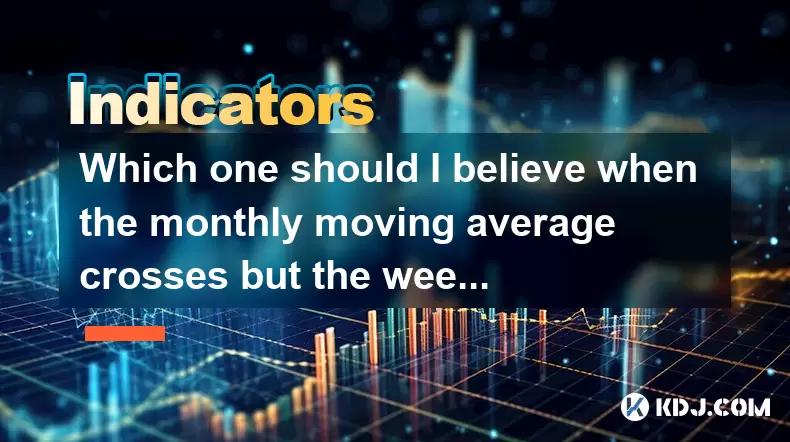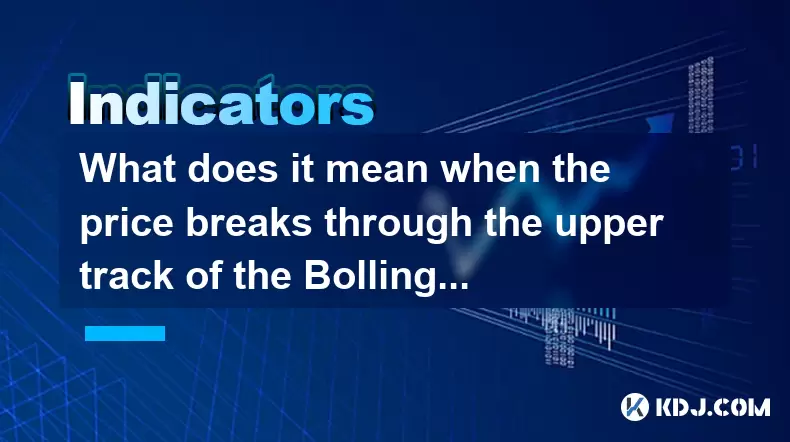-
 Bitcoin
Bitcoin $117500
-0.66% -
 Ethereum
Ethereum $3760
-1.24% -
 XRP
XRP $3.087
-2.54% -
 Tether USDt
Tether USDt $0.9999
-0.01% -
 BNB
BNB $803.6
-4.03% -
 Solana
Solana $180.3
-4.15% -
 USDC
USDC $0.9998
-0.01% -
 Dogecoin
Dogecoin $0.2218
-4.92% -
 TRON
TRON $0.3366
3.71% -
 Cardano
Cardano $0.7785
-3.73% -
 Hyperliquid
Hyperliquid $42.90
-4.75% -
 Sui
Sui $3.797
-7.45% -
 Stellar
Stellar $0.4165
-2.32% -
 Chainlink
Chainlink $17.65
-4.17% -
 Bitcoin Cash
Bitcoin Cash $561.0
-3.86% -
 Hedera
Hedera $0.2611
-4.54% -
 Avalanche
Avalanche $24.33
-7.02% -
 UNUS SED LEO
UNUS SED LEO $8.972
0.06% -
 Litecoin
Litecoin $107.6
-2.79% -
 Toncoin
Toncoin $3.254
-1.84% -
 Shiba Inu
Shiba Inu $0.00001306
-4.69% -
 Ethena USDe
Ethena USDe $1.001
0.00% -
 Uniswap
Uniswap $10.10
-4.83% -
 Polkadot
Polkadot $3.902
-4.63% -
 Monero
Monero $315.1
-2.57% -
 Dai
Dai $1.000
0.02% -
 Bitget Token
Bitget Token $4.499
-2.53% -
 Pepe
Pepe $0.00001145
-7.38% -
 Cronos
Cronos $0.1479
6.07% -
 Aave
Aave $281.3
-4.07%
Which one should I believe when the monthly moving average crosses but the weekly line crosses?
When monthly and weekly moving averages give conflicting signals in crypto trading, align your strategy with the dominant trend and use additional tools like RSI or MACD for confirmation.
Jun 19, 2025 at 06:50 am

Understanding Moving Averages in Cryptocurrency Trading
In cryptocurrency trading, moving averages (MAs) are among the most widely used technical indicators. They help traders identify trends by smoothing out price data over a specified period. Two common types of moving averages are the Simple Moving Average (SMA) and the Exponential Moving Average (EMA). Traders often rely on crossovers between different timeframes—such as the monthly and weekly moving averages—to make informed decisions.
When a trader encounters conflicting signals from these two timeframes, confusion arises. For instance, if the monthly moving average shows a bullish crossover, but the weekly moving average indicates a bearish signal, it becomes challenging to determine which one to trust.
Monthly vs Weekly Crossover: Timeframe Matters
The first step in resolving this dilemma is understanding the significance of each timeframe. The monthly moving average reflects long-term trends and is less susceptible to short-term volatility. It acts as a broader market sentiment indicator. Conversely, the weekly moving average provides more immediate insights into recent price movements and can be more sensitive to sudden shifts in market dynamics.
If the monthly MA crosses above its signal line, it suggests a potential long-term bullish trend. However, a weekly MA crossing below might indicate short-term weakness or correction. In such a case, traders must assess whether they are investing for the long term or engaging in short-term speculation.
How to Interpret Conflicting Signals
Conflicting moving average crossovers between monthly and weekly charts are not uncommon in the volatile crypto market. Here’s how you can approach them:
- Align with your trading strategy: Long-term investors may place more emphasis on the monthly chart since it filters out noise and offers a clearer picture of the underlying trend.
- Use the weekly chart for timing entries: If the monthly chart is bullish but the weekly is bearish, consider waiting for the weekly trend to align before entering a position. This helps avoid buying during a pullback.
- Apply additional confirmation tools: Use other indicators like Relative Strength Index (RSI) or MACD to validate the strength of either signal. This reduces the risk of acting on false positives.
Practical Steps to Analyze Monthly and Weekly Crossovers
Here’s a detailed guide on how to practically analyze and act upon conflicting moving average signals:
- Open both the monthly and weekly charts of the cryptocurrency you're analyzing.
- Identify the type of moving averages being used—common choices include the 50-period and 200-period MAs.
- Look for crossover events where the shorter MA crosses above or below the longer MA.
- On the monthly chart, check if the crossover has occurred recently or if it's part of an ongoing trend.
- Switch to the weekly chart and determine whether the current trend supports the monthly signal or contradicts it.
- Assess volume during the crossovers—higher volume on the monthly chart reinforces the validity of the signal.
- Consider using Fibonacci retracement levels or support/resistance zones to evaluate potential reversal points on the weekly chart.
This multi-timeframe analysis allows traders to filter out misleading signals and focus on high-probability setups.
Using Higher Timeframes to Filter Noise
One effective method to resolve conflicting signals is to use higher timeframes as a primary filter. For example, if the monthly moving average confirms a bullish trend, treat all weekly signals as potential opportunities to enter long positions during dips rather than signs of reversal.
Traders can also implement a "top-down" approach, starting from the monthly chart, then zooming into the weekly, and finally checking daily or even 4-hour charts for precise entry points. This layered approach ensures that trades are aligned with the dominant trend while avoiding premature exits due to minor corrections.
Common Pitfalls to Avoid
Many traders fall into traps when interpreting conflicting moving average signals. Some of the most frequent mistakes include:
- Overreacting to short-term signals without considering the long-term context.
- Relying solely on moving averages without incorporating other confirming indicators.
- Ignoring the importance of volume and market news, which can heavily influence crossovers.
- Failing to define clear entry and exit strategies based on multiple timeframes.
Avoiding these pitfalls requires discipline and a structured approach to technical analysis.
Frequently Asked Questions
Q1: Can I use different types of moving averages for monthly and weekly charts?
Yes, many traders use different types—like SMA for monthly and EMA for weekly—to capture both long-term trends and short-term momentum effectively.
Q2: Should I always prioritize the monthly moving average over the weekly?
Not necessarily. While the monthly chart offers a broader perspective, active traders may give more weight to the weekly chart depending on their strategy and holding period.
Q3: How do I know if a crossover is reliable?
Look for confluence with other indicators, increased trading volume, and alignment with key support/resistance levels to confirm the reliability of a crossover.
Q4: Do moving averages work well in sideways markets?
Moving averages tend to produce false signals in range-bound markets. It’s advisable to combine them with oscillators like RSI or Stochastic to improve accuracy.
Disclaimer:info@kdj.com
The information provided is not trading advice. kdj.com does not assume any responsibility for any investments made based on the information provided in this article. Cryptocurrencies are highly volatile and it is highly recommended that you invest with caution after thorough research!
If you believe that the content used on this website infringes your copyright, please contact us immediately (info@kdj.com) and we will delete it promptly.
- Whale Activity, Altcoins, and Market Cooldown: What's the Deal?
- 2025-07-30 04:50:13
- Crypto Presale Buzz: Experts Eye Binance Coin's Staying Power and New Contenders
- 2025-07-30 04:50:13
- BlockDAG Builders Surge Past 4,500 Amidst Presale Hype
- 2025-07-30 05:30:13
- BlockDAG's Run Outpaces Meme Buzz: Little Pepe's Fading Frog
- 2025-07-30 05:30:13
- Ruvi AI: Analyst Favorite and Token Gainer Poised for Massive ROI?
- 2025-07-30 05:35:12
- Algorand, Remittix, and Gains: What's Hot in the Crypto Space?
- 2025-07-30 05:35:12
Related knowledge

What does it mean when the EMA combination crosses upward for the first time after sideways trading?
Jul 28,2025 at 03:43pm
Understanding the EMA and Its Role in Technical AnalysisThe Exponential Moving Average (EMA) is a widely used technical indicator in cryptocurrency tr...

What does it mean when the price breaks through the upper track of the Bollinger Band but the RSI is overbought?
Jul 30,2025 at 03:35am
Understanding Bollinger Bands and Their Upper TrackBollinger Bands are a widely used technical analysis tool developed by John Bollinger. They consist...

What signal does the ROC send when it rises rapidly from a low level and breaks through the zero axis?
Jul 27,2025 at 10:15am
Understanding the Rate of Change (ROC) IndicatorThe Rate of Change (ROC) is a momentum-based oscillator used in technical analysis to measure the perc...

What does it mean when the moving averages are glued together and a gap appears?
Jul 29,2025 at 07:49pm
Understanding Moving Averages in Cryptocurrency TradingMoving averages are among the most widely used technical indicators in the cryptocurrency tradi...

What does it mean when TEMA breaks through the long-term downward trend line?
Jul 29,2025 at 02:50pm
Understanding the Role of Smart Contracts in Decentralized Finance (DeFi)Smart contracts are self-executing agreements with the terms of the agreement...

What does it mean when the price breaks through the double bottom neckline and the moving averages are arranged in a bullish pattern?
Jul 28,2025 at 10:57am
Understanding the Double Bottom PatternThe double bottom is a widely recognized reversal chart pattern in technical analysis, particularly within the ...

What does it mean when the EMA combination crosses upward for the first time after sideways trading?
Jul 28,2025 at 03:43pm
Understanding the EMA and Its Role in Technical AnalysisThe Exponential Moving Average (EMA) is a widely used technical indicator in cryptocurrency tr...

What does it mean when the price breaks through the upper track of the Bollinger Band but the RSI is overbought?
Jul 30,2025 at 03:35am
Understanding Bollinger Bands and Their Upper TrackBollinger Bands are a widely used technical analysis tool developed by John Bollinger. They consist...

What signal does the ROC send when it rises rapidly from a low level and breaks through the zero axis?
Jul 27,2025 at 10:15am
Understanding the Rate of Change (ROC) IndicatorThe Rate of Change (ROC) is a momentum-based oscillator used in technical analysis to measure the perc...

What does it mean when the moving averages are glued together and a gap appears?
Jul 29,2025 at 07:49pm
Understanding Moving Averages in Cryptocurrency TradingMoving averages are among the most widely used technical indicators in the cryptocurrency tradi...

What does it mean when TEMA breaks through the long-term downward trend line?
Jul 29,2025 at 02:50pm
Understanding the Role of Smart Contracts in Decentralized Finance (DeFi)Smart contracts are self-executing agreements with the terms of the agreement...

What does it mean when the price breaks through the double bottom neckline and the moving averages are arranged in a bullish pattern?
Jul 28,2025 at 10:57am
Understanding the Double Bottom PatternThe double bottom is a widely recognized reversal chart pattern in technical analysis, particularly within the ...
See all articles

























































































